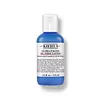What's inside
What's inside
 Key Ingredients
Key Ingredients

 Benefits
Benefits

 Concerns
Concerns

 Ingredients Side-by-side
Ingredients Side-by-side

Glycoproteins
Skin ConditioningPlant Ash Extract
Tocopherol
AntioxidantWater
Skin ConditioningGlycerin
HumectantAlcohol Denat.
AntimicrobialIsononyl Isononanoate
EmollientAmmonium Polyacryloyldimethyl Taurate
Emulsion StabilisingPhenoxyethanol
PreservativeImperata Cylindrica Root Extract
Skin ConditioningDivinyldimethicone/Dimethicone Copolymer
Tocopheryl Acetate
AntioxidantPolyperfluoromethylisopropyl Ether
Skin ConditioningHexylene Glycol
EmulsifyingCaprylyl Glycol
EmollientBeheneth-10
EmulsifyingPanthenol
Skin ConditioningPEG-100 Stearate
Glyceryl Stearate
EmollientPolyacrylamide
Xanthan Gum
EmulsifyingPseudoalteromonas Ferment Extract
HumectantFructose
HumectantBHT
AntioxidantGlucose
HumectantC13-14 Isoparaffin
EmollientBiosaccharide Gum-1
HumectantMenthol
MaskingDisodium EDTA
C12-13 Pareth-23
CleansingLaureth-7
EmulsifyingC12-13 Pareth-3
EmulsifyingTriethanolamine
BufferingCarbomer
Emulsion StabilisingUrea
BufferingDextrin
AbsorbentAcrylates/C10-30 Alkyl Acrylate Crosspolymer
Emulsion StabilisingHexyl Nicotinate
EmollientSucrose
HumectantGlutamic Acid
HumectantAspartic Acid
MaskingAlanine
MaskingGlycoproteins, Plant Ash Extract, Tocopherol, Water, Glycerin, Alcohol Denat., Isononyl Isononanoate, Ammonium Polyacryloyldimethyl Taurate, Phenoxyethanol, Imperata Cylindrica Root Extract, Divinyldimethicone/Dimethicone Copolymer, Tocopheryl Acetate, Polyperfluoromethylisopropyl Ether, Hexylene Glycol, Caprylyl Glycol, Beheneth-10, Panthenol, PEG-100 Stearate, Glyceryl Stearate, Polyacrylamide, Xanthan Gum, Pseudoalteromonas Ferment Extract, Fructose, BHT, Glucose, C13-14 Isoparaffin, Biosaccharide Gum-1, Menthol, Disodium EDTA, C12-13 Pareth-23, Laureth-7, C12-13 Pareth-3, Triethanolamine, Carbomer, Urea, Dextrin, Acrylates/C10-30 Alkyl Acrylate Crosspolymer, Hexyl Nicotinate, Sucrose, Glutamic Acid, Aspartic Acid, Alanine
Water
Skin ConditioningIsododecane
EmollientButylene Glycol
HumectantPolypropylene
Dimethicone
EmollientBis-PEG-18 Methyl Ether Dimethyl Silane
EmollientGlycerin
HumectantAmmonium Acryloyldimethyltaurate/Vp Copolymer
Polygonum Cuspidatum Root Extract
AntioxidantCucumis Sativus Fruit Extract
EmollientLaminaria Saccharina Extract
Skin ProtectingHordeum Vulgare Extract
EmollientSaccharomyces Lysate Extract
HumectantLactobacillus Ferment
Skin ConditioningChamomilla Recutita Extract
Skin ConditioningHelianthus Annuus Seedcake
AbrasiveCaffeine
Skin ConditioningSodium Hyaluronate
HumectantTrehalose
HumectantOleth-10
EmulsifyingCaprylyl Glycol
EmollientPolysilicone-11
Tocopheryl Acetate
AntioxidantPropylene Glycol Dicaprate
EmollientHexylene Glycol
EmulsifyingLaureth-23
CleansingTromethamine
BufferingLaureth-4
EmulsifyingAcrylates/C10-30 Alkyl Acrylate Crosspolymer
Emulsion StabilisingSilica
AbrasiveDisodium EDTA
Phenoxyethanol
PreservativeCI 15985
Cosmetic ColorantCI 14700
Cosmetic ColorantCI 19140
Cosmetic ColorantWater, Isododecane, Butylene Glycol, Polypropylene, Dimethicone, Bis-PEG-18 Methyl Ether Dimethyl Silane, Glycerin, Ammonium Acryloyldimethyltaurate/Vp Copolymer, Polygonum Cuspidatum Root Extract, Cucumis Sativus Fruit Extract, Laminaria Saccharina Extract, Hordeum Vulgare Extract, Saccharomyces Lysate Extract, Lactobacillus Ferment, Chamomilla Recutita Extract, Helianthus Annuus Seedcake, Caffeine, Sodium Hyaluronate, Trehalose, Oleth-10, Caprylyl Glycol, Polysilicone-11, Tocopheryl Acetate, Propylene Glycol Dicaprate, Hexylene Glycol, Laureth-23, Tromethamine, Laureth-4, Acrylates/C10-30 Alkyl Acrylate Crosspolymer, Silica, Disodium EDTA, Phenoxyethanol, CI 15985, CI 14700, CI 19140
Ingredients Explained
These ingredients are found in both products.
Ingredients higher up in an ingredient list are typically present in a larger amount.
Acrylates/C10-30 Alkyl Acrylate Crosspolymer is a synthetic polymer. It is used to thicken and improve the texture of products. Due to its properties, it can prevent water and oil ingredients from separating.
Caprylyl Glycol is a humectant and emollient, meaning it attracts and preserves moisture.
It is a common ingredient in many products, especially those designed to hydrate skin. The primary benefits are retaining moisture, skin softening, and promoting a healthy skin barrier.
Though Caprylyl Glycol is an alcohol derived from fatty acids, it is not the kind that can dry out skin.
This ingredient is also used as a preservative to extend the life of products. It has slight antimicrobial properties.
Learn more about Caprylyl GlycolDisodium EDTA plays a role in making products more stable by aiding other preservatives.
It is a chelating agent, meaning it neutralizes metal ions that may be found in a product.
Disodium EDTA is a salt of edetic acid and is found to be safe in cosmetic ingredients.
Learn more about Disodium EDTAGlycerin is already naturally found in your skin. It helps moisturize and protect your skin.
A study from 2016 found glycerin to be more effective as a humectant than AHAs and hyaluronic acid.
As a humectant, it helps the skin stay hydrated by pulling moisture to your skin. The low molecular weight of glycerin allows it to pull moisture into the deeper layers of your skin.
Hydrated skin improves your skin barrier; Your skin barrier helps protect against irritants and bacteria.
Glycerin has also been found to have antimicrobial and antiviral properties. Due to these properties, glycerin is often used in wound and burn treatments.
In cosmetics, glycerin is usually derived from plants such as soybean or palm. However, it can also be sourced from animals, such as tallow or animal fat.
This ingredient is organic, colorless, odorless, and non-toxic.
Glycerin is the name for this ingredient in American English. British English uses Glycerol/Glycerine.
Learn more about GlycerinHexylene Glycol is a surfactant. Glycols are a class of alcohols. Hexylene Glycol is a surfactant and emulsifier.
As a surfactant, Hexylene Glycol helps gather dirt and oil on your skin to be washed away.
As an emulsifier, Hexylene Glycol helps keep water and oil together. This prevents them from separating in a product. Hexylene Glycol also thins out the texture of a product by lessening viscosity.
Hexylene Glycol has a small molecular weight.
Learn more about Hexylene GlycolPhenoxyethanol is a preservative that has germicide, antimicrobial, and aromatic properties. Studies show that phenoxyethanol can prevent microbial growth. By itself, it has a scent that is similar to that of a rose.
It's often used in formulations along with Caprylyl Glycol to preserve the shelf life of products.
Tocopheryl Acetate is AKA Vitamin E. It is an antioxidant and protects your skin from free radicals. Free radicals damage the skin by breaking down collagen.
One study found using Tocopheryl Acetate with Vitamin C decreased the number of sunburned cells.
Tocopheryl Acetate is commonly found in both skincare and dietary supplements.
Learn more about Tocopheryl AcetateWater. It's the most common cosmetic ingredient of all. You'll usually see it at the top of ingredient lists, meaning that it makes up the largest part of the product.
So why is it so popular? Water most often acts as a solvent - this means that it helps dissolve other ingredients into the formulation.
You'll also recognize water as that liquid we all need to stay alive. If you see this, drink a glass of water. Stay hydrated!
Learn more about Water